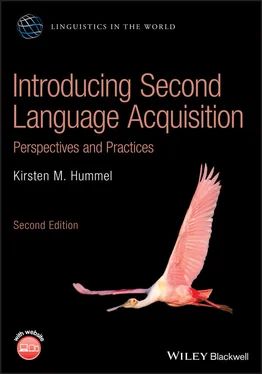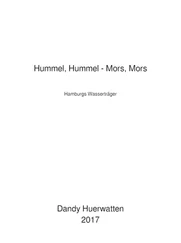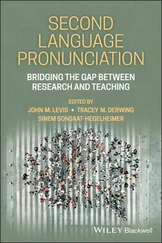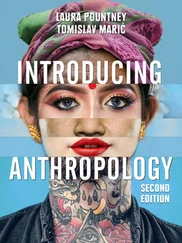1 Count all obvious morphemes (“cat,” “baby”).
2 Count as separate morphemes grammatical markers such as the “–s” plural marker (e.g. “cat‐s”), the past tense marker “–ed” (e.g. “talk‐ed”), the “–ing” present participle marker (e.g. “throw‐ing”), the third person singular marker (e.g. “she drinks milk”).
3 Count as one morpheme plurals that do not occur in the singular (e.g. “clothes”).
4 Contractions are counted as two morphemes (e.g. “can't, “we'll”).
5 Compound words and proper names count as single morphemes (e.g. Big Bird, policeman).
6 Irregular past forms and irregular plurals count as one morpheme (e.g. “went,” “geese”).
7 Diminutives (e.g. “horsie”) and concatenatives (e.g. “gonna,” “hafta”) count as one morpheme.
8 Do not count hesitations, filler words (“um,” “hum”), false starts, or repetitions, unless the repetition is for emphasis (e.g. “No! No! No!” would count as three morphemes, i.e., one morpheme in each of three utterances).
1 “Baby get Teddy Bear.”
2 “Teddy Bear eat.”
3 “Eating cookie.”
4 “Cookie gone.”
5 “More cookie.”
6 Number of morphemes = 12
7 Number of utterances = 5
8 MLU (12 divided by 5) = 2.4
1 Use the same transcript as for Exercise 1, or choose a different CHILDES transcript, to examine the type of language used by adults when speaking to a child. What type of utterances tend to characterize the adult's speech? Do they differ from how adults speak to other adults?
2 Arrange to observe the interactions between a young child and a parent/caretaker in his or her environment. Record the child's and caretaker's utterances. Next, observe an older child or adult as he or she communicates in an L2 with a native speaker of the target language and record these interactions. Compare the type of language (types and length of sentences, types of words, repetition, etc.) used by the caretaker and native speaker with the young L1 learner and the older L2 learner. Is the type of language used different in each case? How so? What other differences do you find in the two sets of data?
3 Observe/tape record children speaking to each other and attempt to identify instances of overgeneralization, i.e. using rules and structures in contexts or instances in which they should not be used (example: “My arm hurted a lot.”).
4 Interview parents of young children and ask them what the first words to appear were. Compare your results from the different families. To what extent are the types of first words similar or not? If possible, also interview parents who speak languages other than English to their children. Are similar types of words reported in those families?
5 Read the article by Jean Berko on her study using the Wug test (available via the CHILDES website). If you have access to a young child (four to seven years old), prepare “Wug” drawings and test the child's ability to generalize morphological rules to invented words, as done in her study. Do you find similar results? If not, can you offer any reasons why?
1 Berko, J. (1958). The child's learning of English morphology. Word 14: 150–177.
2 Bloom, L. (1973). One Word at a Time: The Use of Single Word Utterances before Syntax. The Hague: Mouton.
3 Bosch, L. and Sebastián‐Gallés, N. (2003). Simultaneous bilingualism and the perception of a language‐specific vowel contrast in the first year of life. Language and Speech 46: 217–243.
4 Brown, R. (1973). A First Language: The Early Stages. Cambridge, MA: Harvard University Press.
5 Cheour, M., Ceponiene, R., Lehtokoski, A. et al. (1998). Development of language‐specific phoneme representations in the infant brain. Nature Neuroscience 1: 351–353.
6 Chomsky, N. (1959). A review of B.F. Skinner's Verbal Behavior. Language 35 (1): 26–58.
7 Chomsky, N. (1968). Language and Mind. New York: Harcourt, Brace, Jovanovich.
8 Clark, E. (1993). The Lexicon in Acquisition. New York: Cambridge University Press.
9 Crago, M. and Allen, S. (1998). Acquiring Inuktitut. In: Language Acquisition in North America: Cross‐Cultural and Cross‐Linguistic Perspectives (eds. O. Taylor and L. Leonard), 245–279. San Diego, CA: Singular Publishing.
10 Davis, B.L. and MacNeilage, P.F. (1995). The articulatory basis of babbling. Journal of Speech and Hearing Research 38: 1199–1211.
11 DeCasper, A.J. and Fifer, W.P. (1980). On human bonding: newborns prefer their mothers' voices. Science 208: 1174–1176.
12 Elman, J.L., Bates, E.A., Johnson, M.H. et al. (1996). Rethinking Innateness: A Connectionist Perspective on Development. Cambridge, MA: MIT Press.
13 Evans, J. (2009). The emergence of language: a dynamical systems account. In: Blackwell Handbook of Language Development (eds. E. Hoff and M. Shatz), 128–147. Oxford: Wiley.
14 Gladwell, M. (2000). The Tipping Point: How Little Things Can Make a Big Difference. New York: Little Brown.
15 Goldfield, B. and Reznick, J.S. (1990). Early lexical acquisition: rate, content, and the vocabulary spurt. Journal of Child Language 17: 171–184.
16 Gopnik, A. and Meltzoff, A.N. (1993). Words and thoughts in infancy: the specificity hypothesis and the development of categorization and naming. In: Advances in Infancy Research, vol. 8 (eds. C. Rovee‐Collier and L.P. Lipsett), 217–249. Norwood, NJ: Ablex.
17 Herman, L.M., Richards, D.G., and Wolz, J.P. (1984). Comprehension of sentences by bottlenosed dolphins. Cognition 16: 129–219.
18 Hockett, C.F. (1960). The origin of speech. Scientific American 203: 89–97.
19 Hoff‐Ginsburg, E. (1986). Function and structure in maternal speech: their relation to the child's development of syntax. Developmental Psychology 22 (2): 155–163.
20 Huttenlocher, J., Haight, W., Bryk, A. et al. (1991). Early vocabulary growth: relation to language input and gender. Developmental Psychology 27 (2): 236–248.
21 Hyltenstam, K. and Abrahamsson, N. (2003). Maturational constraints in SLA. In: The Handbook of Second Language Acquisition (eds. C.J. Doughty and M.H. Long), 539–588. Oxford: Blackwell.
22 Johnson, J.J. and Newport, E.L. (1989). Critical period effects in second language learning: the influence of maturational state on acquisition of ESL. Cognitive Psychology 21: 60–99.
23 Lightbown, P.M. (1983). Exploring relationships between developmental and instructional sequences in L2 acquisition. In: Classroom Oriented Research in Second Language Acquisition (eds. H.W. Seliger and M.H. Long), 217–245. Rowley, MA: Newbury House.
24 Liu, H.‐M., Tsao, F.‐M., and Kuhl, P.K. (2009). Age‐related changes in acoustic modifications of Mandarin maternal speech to preverbal infants and five‐year‐old children: a longitudinal study. Journal of Child Language 33 (4): 909–922.
25 Lust, B. (2006). Child Language: Acquisition and Growth. Cambridge, UK: Cambridge University Press.
26 MacWhinney, B. (2000). The CHILDES Project: Tools for analyzing talk, 3e. Mahwah, NJ: Lawrence Erlbaum Associates.
27 Miller, J.F. and Chapman, R.S. (1981). The relation between age and mean length of utterance in morphemes. Journal of Speech and Hearing Research 23: 154–161.
28 Ochs, E. (1985). Variation and error: a sociolinguistic study of language acquisition in Samoa. In: The Crosslinguistic Study of Language Acquisition (ed. D. Slobin), 783–838. Hillsdale, NJ: Lawrence Erlbaum Associates.
29 Oyama, S. (1976). A sensitive period in the acquisition of a non‐native phonological system. Journal of Psycholinguistic Research 5: 261–285.
Читать дальше












